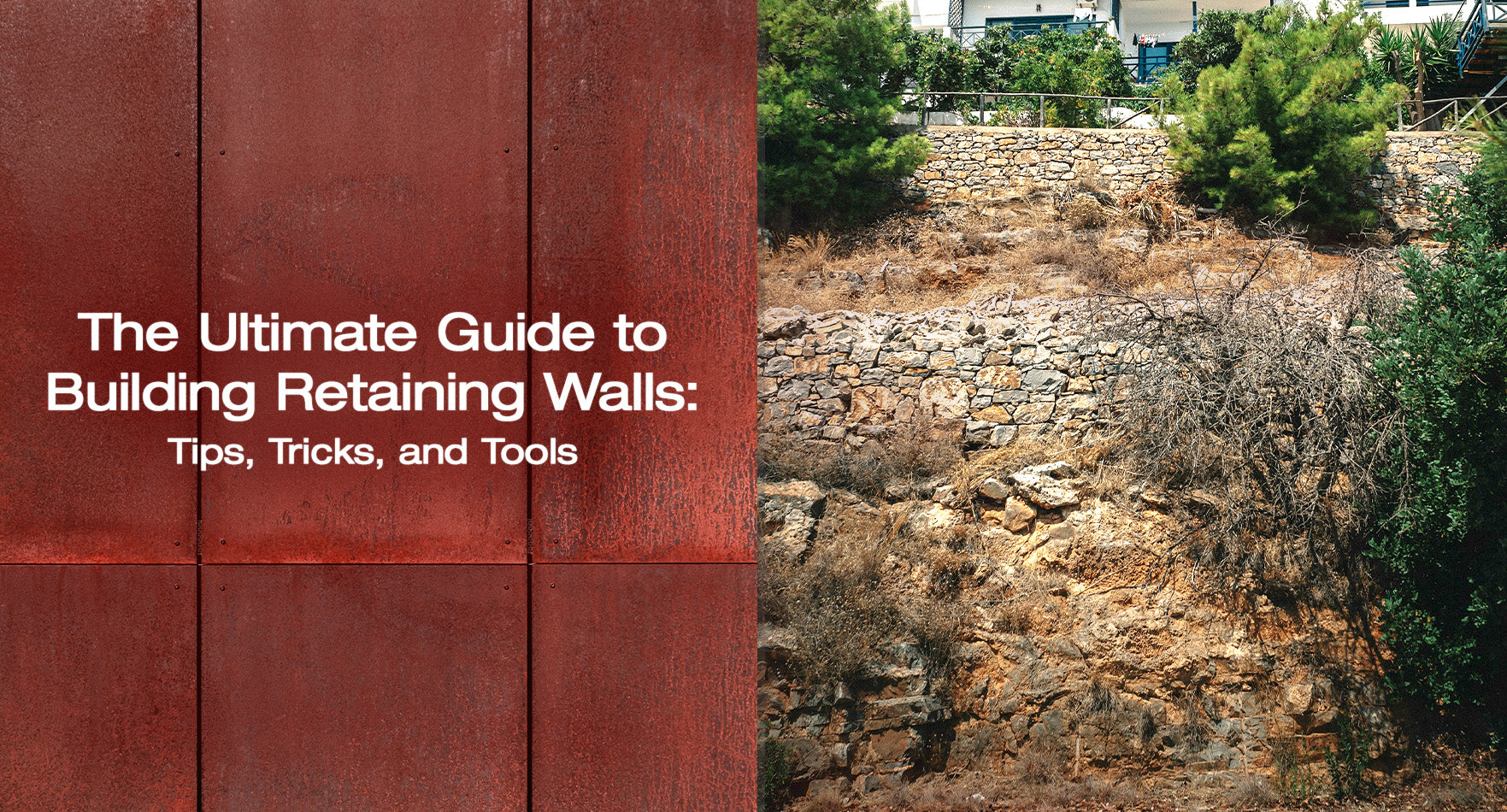Retaining walls serve both functional and aesthetic purposes in landscaping and construction projects. Whether you're looking to prevent soil erosion, create level terraces, or enhance the visual appeal of your outdoor space, building a retaining wall can be a rewarding and transformative endeavor. In this comprehensive guide, we'll explore everything you need to know about building retaining walls, from planning and preparation to construction techniques and essential tools.
1. Planning and Design: Before diving into construction, it's essential to carefully plan and design your retaining wall project. Consider factors such as the purpose of the wall, the slope of the terrain, and the materials you'll use. Determine the desired height, length, and location of the wall, and obtain any necessary permits or approvals from local authorities.
2. Choosing Materials: Retaining walls can be constructed from a variety of materials, each offering its own unique advantages and aesthetic appeal. Common options include concrete blocks, natural stone, timber, brick, and interlocking pavers. Consider factors such as durability, cost, and compatibility with your landscaping style when selecting materials for your retaining wall.
3. Site Preparation: Proper site preparation is crucial for the success of your retaining wall project. Start by marking the layout of the wall using stakes and string, ensuring proper alignment and grading. Clear the area of any vegetation, debris, or obstructions, and excavate the foundation trench to the required depth and width.
4. Building the Foundation: A sturdy foundation is essential for the stability and longevity of your retaining wall. Depending on the size and height of the wall, you may need to excavate a trench and fill it with a base material such as gravel or crushed stone. Compact the base material thoroughly to create a solid foundation for the wall.
5. Construction Techniques: When building the retaining wall, it's essential to follow proper construction techniques to ensure structural integrity and stability. Start by laying the first course of blocks or stones, ensuring level alignment and tight joint spacing. Use a spirit level and rubber mallet to adjust the position of each block as needed. Continue adding courses of blocks, staggering joints and offsetting seams to create a stable bond.
6. Backfilling and Drainage: Once the retaining wall is constructed, backfill the space behind it with gravel or drainage aggregate to provide support and promote proper drainage. Install perforated drainage pipes at the base of the wall to channel excess water away from the structure and prevent hydrostatic pressure buildup.
7. Finishing Touches: To enhance the aesthetic appeal of your retaining wall, consider adding finishing touches such as capstones, coping stones, or decorative veneers. These elements can provide a polished look and help tie the wall into your overall landscaping design.
8. Essential Tools: Building a retaining wall requires a variety of tools to ensure precision and efficiency. Essential tools for the project may include a shovel, wheelbarrow, tape measure, level, rubber mallet, tamper, string line, and power saw or chisel for cutting materials to size.
Building a retaining wall is a rewarding project that can transform your outdoor space and enhance its functionality and beauty. By following the tips, tricks, and techniques outlined in this guide, you can tackle your retaining wall project with confidence and achieve professional-quality results. Whether you're a seasoned DIY enthusiast or tackling your first landscaping project, building a retaining wall is within reach with proper planning, preparation, and the right tools.










